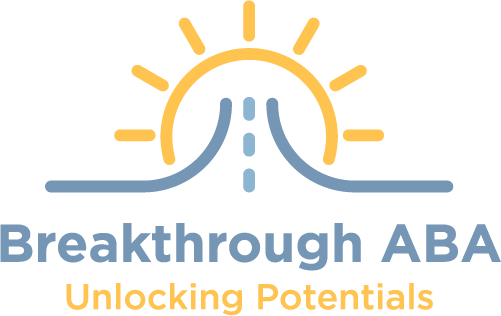————————
One of the first decisions families face when starting ABA therapy is:
Should we choose in-home services or a center-based program?
Both models offer unique benefits—and understanding the differences can help you choose the best fit for your child’s learning style, schedule, and developmental needs.
At Breakthrough ABA, we offer guidance and flexibility to help families make the right choice. In this post, we break down the pros and considerations of each setting so you can feel confident about what’s best for your child.
What’s the Difference?
In-home ABA takes place in your child’s natural environment—your home. Therapists come to you and work on skills that fit into your family’s daily routine.
Center-based ABA is delivered in a structured clinic or learning center with controlled environments designed specifically for skill-building and socialization.
Both models use evidence-based ABA therapy strategies and are led by qualified professionals. The difference lies in the setting and structure.
Benefits of In-Home ABA
Real-Life Learning in a Familiar Environment
In-home therapy focuses on helping your child learn where they live and play. This makes it ideal for teaching:
- Daily routines (brushing teeth, dressing, cleaning up)
- Mealtime behaviors
- Transitions within the home (e.g., from playtime to bedtime)
Your child learns skills in the same space they’ll be using them.
Family Involvement
Parents and caregivers can observe sessions more easily, ask questions in real-time, and get personalized coaching from the therapist. This can strengthen follow-through outside of therapy hours.
Comfort and Reduced Transitions
Some children feel safer and more regulated in their home environment, especially if they have anxiety, sensory sensitivities, or difficulty adjusting to new places.
Considerations for In-Home ABA
- Distractions: Pets, siblings, and household noise can interrupt learning.
- Space: You may need to dedicate a quiet area for therapy sessions.
- Social Interaction: There may be fewer opportunities to practice peer interactions unless siblings or playdates are involved.
Benefits of Center-Based ABA
Structured, Distraction-Free Environment
Centers are designed for learning. They often include:
- Designated therapy rooms
- Group learning areas
- Sensory play spaces
This setup allows for focused sessions and consistent routines
Built-In Socialization
Centers naturally provide peer interaction. Children can:
- Practice turn-taking and sharing
- Participate in group activities
- Work on social goals in real time with other kids
This is especially helpful for school readiness and developing friendships
More Intensive Scheduling Options
Some centers offer full-day or part-time programs that closely mirror a school schedule. This can be beneficial if your child needs high treatment intensity or you’re looking to build independence outside the home.
Considerations for Center-Based ABA
- Commute Time: Depending on your location, transportation can add time and stress to your day.
- Adjustment Period: Children may need time to get comfortable in a new environment with new routines.
- Less Immediate Family Involvement: While caregivers still play a key role, they may not observe sessions as closely or as often as they can at home.
Questions to Ask When Choosing
To help guide your decision, consider:
- Where does your child feel most regulated and engaged?
- Do they benefit more from a calm space or a structured setting?
- Are social goals (e.g., peer interaction) a high priority?
- What fits best with your family’s schedule and availability?
- Are there specific skills your child needs to work on in the home setting?
Our Approach: Personalization Over One-Size-Fits-All
At Breakthrough ABA, we don’t believe one setting is better than the other—we believe the right environment is the one that best supports your child’s growth. We take the time to get to know your child, listen to your goals, and help you choose the model that offers the best opportunity for success.
Some families even benefit from a hybrid approach, combining the structure of center-based ABA therapy with the practical skills of in-home ABA therapy.
Every child is different—and so is every family. Whether you choose in-home ABA, center-based ABA, or a combination of both, our goal remains the same: to help your child make meaningful progress with compassionate, individualized support throughout the Greater Houston area.
